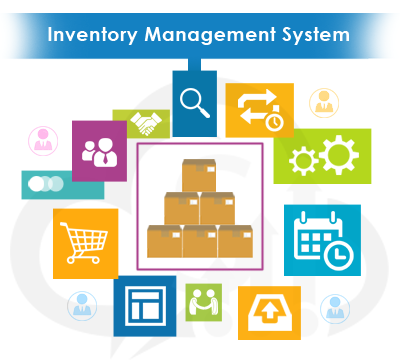E-store management is a priority for any technology company that wants to succeed in the quite competitive environment of electronic commerce. Nowadays, digital retail is one of the crucial elements of how to manage an online store, organize sales, and increase customer satisfaction. This article explores why e-store management is indispensable for tech firms and outlines best practices, benefits, and tools that ensure sustained growth.
Introduction
In the current era of rapid digital evolution, technology companies are under immense pressure to remain competitive. One of the key reasons for this has been effective e-store management. The fact that customers are moving rapidly toward online purchase habits necessitates that tech firms employ an effective digital store management strategy.
E-store management is about the systems, tools, and practices that are adopted to manage online retailing activities, right from maintaining inventories of goods to maintaining customer information, fulfilling orders, and marketing. To technology companies, this is hardly about managing sales; it’s about creating an integrated, scalable ecosystem in support of customer engagement, brand visibility, and operational efficiency.
This article delves deep into the importance of e-store management for tech companies, offering insights into its benefits, challenges, and cutting-edge tools. We’ll also examine strategies to optimize digital retail operations and avoid common pitfalls, ensuring tech firms can thrive in the e-commerce realm.
What is E-Store management?
E-store management refers to the coordination of processes and technologies that ensure the efficient operation of an online store. This includes:
- Inventory management: To monitor stock levels and replenishment to prevent stockouts.
- Order processing: Accurately and on-time fulfillment of customer purchases.
- Customer engagement: Employed through the use of chatbots and personalized recommendations to improve user experiences.
- Analytics and reporting: Showcasing data to enable insight into better decision-making for sales, marketing, and operations.
Why is it crucial for tech companies?
- Complex product offerings: Technical products involve many minute details of specifications that have to be categorized and updated.
- High competition: Seamless e-store operation allows a brand to stand out from the competition in a crowded marketplace.
- Scalable growth: E-store management supports scalability as businesses expand their product range or customer base.
Advantages of a well-managed E-store
- Improved efficiency: An automated system simplifies the repetitive process of updating inventory.
- Improved customer experience: An easy-to-navigate interface increases satisfaction with a more personalized shopping experience.
- Higher conversion rates: Enhanced navigation and pointed promotions ensure sales.
Challenges in E-store management for tech companies
Managing an e-store is not without its difficulties. Here are some challenges technology companies often encounter:
Technical complexities
- Integration issues: Integrating e-store platforms with CRMs or ERPs can be problematic.
- Frequent updates: Technical products tend to be fast-moving, with listings needing near-constant updating.
Data Management concerns
- Incoherent information: When there is duplicate or incorrect product information, that confuses buyers.
- Analytics overload: Interpreting large volumes of data can overwhelm teams without proper tools.
Customer expectations
- Demand for personalization: Customers today demand personalized recommendations and offers.
- High standards of fast delivery: Same-day delivery raised the ante on how orders are fulfilled.
Strategies for overcoming challenges
Overcoming these hurdles requires a combination of robust tools and strategic approaches.

Focus on automation
- Use SaaS e-store solutions to streamline operations.
- Implement AI-powered tools for real-time inventory tracking and customer recommendations.
Invest in training
Equip teams with the skills to manage e-store platforms efficiently.
Leverage analytics
Adopt cloud-based analytics platforms to gain actionable insights from sales and customer behavior data.
Optimizing E-Store management for better results
E-store optimization in today’s competitive digital landscape is quite crucial to achieving better results, especially in technology companies. An optimized e-store not only enhances operational efficiency but also offers an enabling experience, allowing customers to spend more time on the site. The essential and crucial tasks a company should focus on would be enhancing the user experience, smooth integration of different tools and platforms, and regular maintenance of the e-store.

Enhance the user experience
UX is really at the root of e-commerce success. An intuitively designed, user-friendly site enables visitors to quickly and easily find what they need, thus converting more. Companies can improve UX by doing the following:
- Create intuitive navigation:
- Use clear product categorization and sub-categorization, allowing customers to find items with ease.
- Employ an advanced search functionality with filters for pricing, features, and availability.
- Optimize page load times:
- Speed is everything. Slower page loads can lead to higher bounce rates and lower customer retention.
- Compress images and employ efficient coding methods to ensure fast loading.
- Mobile optimization:
- With the rise in mobile commerce, your store should be fully responsive across devices.
- Simplify checkout procedures for mobile users with things like one-click purchasing and auto-fill options.
Integrate seamlessly
For streamlined operations and a consistent customer experience, technology companies must integrate their e-store with other critical systems. This enhances data accuracy and workflow efficiency.
- CRM integration:
- Link the e-store to the CRM system in order to have synchronous updates of customer information, purchase history, and preferences.
- Leverage insights from the CRM to drive personalized marketing campaigns and increase customer retention.
- E-commerce API connectivity:
- Use APIs to integrate the e-store with other platforms like inventory management systems, payment gateways, and shipping services.
- Ensure customer information, details about orders, and inventory are updated in all channels in real time.
Regular maintenance
Maintaining an e-store is crucial to ensure optimal performance and provide a reliable shopping experience. Regular checks and updates help prevent technical issues and keep the platform up-to-date.
- Periodic issue identification:
- Run audits for the detection and resolution of broken links, outdated pages, and compatibility issues with new devices or browsers.
- Regularly monitor site performance proactively to deal with any kind of downtime or glitches.
- Update product information:
- Keep product descriptions, specifications, and pricing updated according to the latest features and promotions.
- Make sure the inventory levels are correct to avoid overselling or disappointing customers who don’t have unavailable items.
- Security and compliance checks:
- Perform routine security audits to protect customer data in compliance with data protection regulations, such as GDPR or CCPA.
- Regularly update the SSLs and software to mitigate vulnerabilities.
Common mistakes to avoid in E-store management
Common mistakes in e-store management can hinder growth and customer satisfaction. Issues like poorly organized navigation, outdated product listings, and lack of mobile optimization reduce user experience. Ignoring inventory tracking or failing to integrate with CRM systems leads to inefficiencies. Regular maintenance, intuitive design, and streamlined processes are essential for success.
Neglecting mobile optimization
Neglecting mobile optimization in e-store management significantly impacts sales and user experience. With over 50% of online traffic coming from mobile devices, an unresponsive or poorly optimized site can lead to high bounce rates and lost conversions. Ensuring mobile-friendly navigation, fast load times, and seamless checkout processes is essential to retaining and converting mobile users into loyal customers.

Ignoring customer feedback
Ignoring customer feedback in e-store management can lead to missed opportunities for improvement and a disconnect with your audience. Feedback provides valuable insights into customer needs, preferences, and pain points. By neglecting it, businesses risk delivering subpar user experiences, reduced satisfaction, and lower customer retention. Prioritizing customer input ensures continuous improvement, fosters loyalty, and aligns the store with market demands.
Overcomplicating navigation
Overcomplicating navigation in an e-store can confuse visitors and lead to higher bounce rates. Complex menus, unclear categories, or excessive clicks required to find products frustrate users and discourage purchases. Simplified, intuitive navigation with well-organized categories, a clear search function, and minimal steps to checkout enhances the shopping experience, ensuring better engagement and increased conversions.
Advanced techniques and future outlook
Advanced techniques in e-store management, such as AI-driven personalization, predictive analytics, and automation, are revolutionizing the online retail landscape. These methods enhance customer experience, optimize inventory, and streamline operations. The future outlook suggests greater integration of emerging technologies like augmented reality (AR), blockchain for secure transactions, and voice commerce to meet evolving consumer demands. Adopting these innovations positions businesses to stay competitive and deliver exceptional value in the digital marketplace.
Emerging trends
- AI-powered chatbots: Provide instant support to customers.
- AR/VR shopping experiences: Let customers virtually test products.
- Blockchain for transactions: Enhance payment security and transparency.
Long-term strategies
- Invest in smart e-store tools that adapt to changing trends.
- Focus on sustainable practices, such as eco-friendly packaging for shipped orders.
Solutions for effective E-store management
In today’s digital marketplace, e-store management has become crucial for maintaining that edge. It is imperative for technology companies, where inventory involves highly valued items, fast-evolving products, and diverse customers’ needs. Effective e-store management solutions ensure streamlined operations, enhance customer experience, and support sustainable growth.
1. Streamlined inventory management
The staple solutions to e-store management involve the utilization of tools that automatically track and update inventories. With live systems, it is now possible for businesses to:
- Avoid overstocking or understocking of products.
- Coordinate stock in multiple sales channels.
- Reduce errors by automatically updating stocks after a sale.

Advanced inventory management tools, combined with predictive analytics, allow for demand forecasting and the ability to make decisions before any action happens.
2. Enhanced customer experience
Customer satisfaction is the heart of any successful e-commerce. Seamless shopping experiences can be delivered through solutions such as AI-powered personalization, intuitive interfaces, and omnichannel customer support. Features include:
- Intuitive navigation and search functionality.
- Personalized recommendations by user preference.
- Efficient post-purchase support builds trust with customers for loyalty.
3. Integrated payment gateways
One of the most crucial elements in e-store management involves secure and multi-faceted options for payment. Top-tier solutions allow multiple modes of payment, like credit cards, debit cards, digital wallets, and ‘Buy Now-Pay Later’ options. Such systems will give encryption and fraud detection some prominence while allowing for cross-border transactions to reach wider markets.
Marketing and promotion automation
Marketing automation is a practical way to bring in traffic and fix conversion rates. E-store management tools usually have modules for:
- Email marketing campaigns.
- Social media integration.
- Personalized promotional offers like discounts and coupons, will allow the e-store to target customers more efficiently at each level of the sales funnel.

Data-driven insights
Analytics tools are indispensable for understanding customer behavior and optimizing e-store performance. Solutions offering data dashboards and detailed reports can provide insights into:
- Customer demographics and preferences.
- Product performance and sales trends.
- Conversion rates and cart abandonment statistics. These insights guide informed decisions about pricing strategies, product launches, and marketing efforts.
Integration with supply chain and logistics
Effective e-store management will involve smooth integration with supply chain systems. Features such as order fulfillment tracking, automated reordering of stock, and efficient vendor management ensure timely delivery and cost savings. Integration with logistics partners can further enhance the last-mile delivery experiences.
Mobile optimization
As more and more shoppers are using mobiles, it becomes imperative that the e-store management platform must accord primacy to a mobile-first strategy. These include responsive designs, fast-loading pages, and mobile-specific features like one-click checkout or app-exclusive discounts.
Want a free consultation to understand how targeted marketing can improve your e-store management? Contact us now!
Robust security measures
Cybersecurity is a major issue for online stores, particularly for technology companies that deal with sensitive data. An effective e-store management solution will provide
- Regular security audits.
- Comply with worldwide data protection legislation.
- Encryption of all transactions and storage of customer data.
Scalability for growth
As the business grows, so does the need for e-store management solutions to be flexible and scalable. Cloud-based platforms enable companies to handle increased traffic, expand product catalogs, and integrate new sales channels without disruption.
Customer retention strategies
Effective e-store management focuses on retaining current customers through loyalty programs, subscription models, and customized post-sale contact. Regular, customized email follow-ups, product restocking reminders, and special offers for repeat customers are some features that keep the customer base strong.
Conclusion
E-store management is no longer a need but an edge for technology companies. Inventing robust tools, optimizing operations, and addressing usual challenges will simply unlock new growth opportunities for tech firms. As e-commerce keeps on evolving, one must stay ahead with innovative strategies and customer-centric approaches. Start enhancing your e-store management today to secure a prosperous future for your technology brand.





